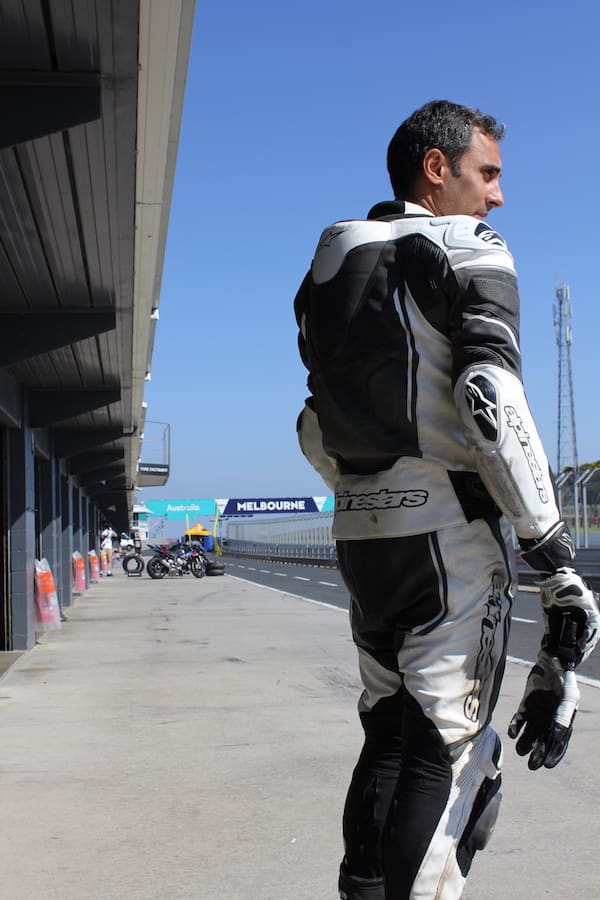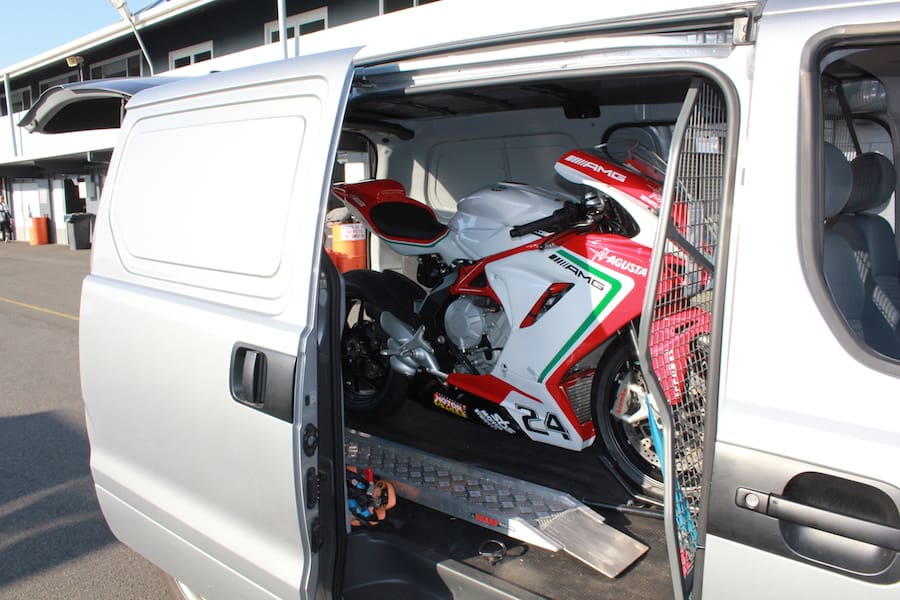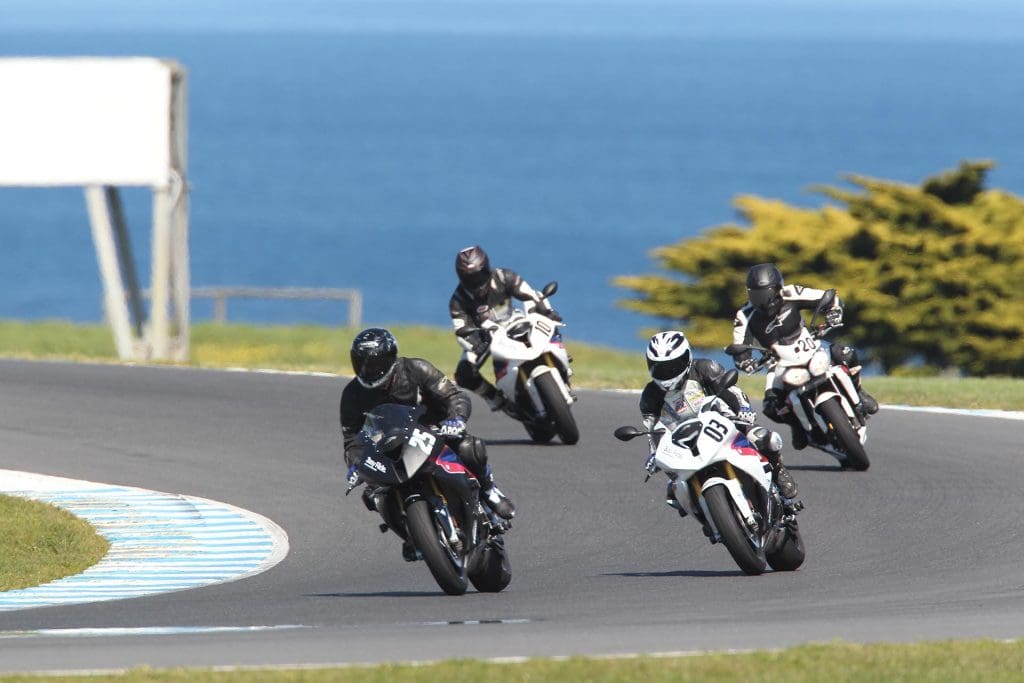The last thing I remember before leaving for Phillip Island with Urban Moto Import’s track-prepared MV Agusta F3 800 were the Editor’s gentle words of encouragement, “If you crash this bike I’ll make you walk home”. And rightly so – I was being given the opportunity of a lifetime and it had to be said. Sure near misses, crashes and even injuries, are occupational hazard for track day enthusiasts but the intoxicating euphoria of nailing your tyres into the asphalt in a way that is simply impossible on the road is too strong to ignore. So it was with that carrot dangling in front of me that I packed up the AMCN van and started planning a trip to arguably one of the best motorcycle race tracks in the world.
The fast and flowing 4.445 km layout comprises twelve corners and the good news for average punters like you and me is that anyone can sample it – all you need is a motorcycle and the cobblers big enough to have a go. Located right here in Victoria, Phillip Island’s daunting reputation (nine-time World Champion Valentino Rossi rates it as his favourite) belies the ease at which anyone can book in and ride it.
The reassuring thing about riding on track is that you don’t have to contend with oncoming traffic or obstacles and can just focus 100% on your bike and finding the most economic way around the circuit. But there’s also a fundamental difference between riding on the track and riding on the road – race tracks are designed to challenge the rider unlike a freeway or your average set of twisty roads. Additional thought and expense goes into creating a closed circuit that will reward the rider for taking the correct line and penalise them for a missed apex or incorrect tip in point.
Where is it
Phillip Island is located approximately 140km’s South East of Melbourne, Victoria and is home to Australia’s two FIM sanctioned WorldSBK (February) and MotoGP (October) events. Motorcyclists from across the nation make the trip to ride this iconic seaside circuit each year, and several freighting specialists exist to assist with motorcycle transport.

Get into gear
To participate in a trackday at Phillip Island you need to wearing the right gear. Full leathers (two-piece must zip together), leather boots with reinforced ankle support that overlap the pants, leather gloves that overlap your sleeves, and a full-face helmet that meets the Australian Standards (AS1698). Back protectors are strongly recommended as are some type of undergarment to help you move in the leathers, and combat the prevailing weather conditions, such as compression clothing (e.g. skins, underarmour etc) or thermals.

Bike prep
If you opt to ride your road bike you will need to tape up all glass (mirrors, headlight, speedo etc) before circulating on track, however many track day aficionados opt trailer their bikes, or transport them in vans. There are several reasons for this – it allows you to bring along extra equipment such as bike stands, tyre warmers and additional tools/fuel/oils/wheels, and also provides the option of using a bike on track that has been modified and would otherwise be unsuitable for the road. Also, motorcycles shod in race glass with crash protection and stripped of lights and indicators are far less expensive to repair if the unexpected happens (as it did to me!) and there’s also a case for reducing fatigue as the day wears on. not riding to the track not just reducing fatigue through the day. A full range of sticky track and road tyres are available for purchase on the day, and qualified mechanics are also on hand to ensure any niggling concerns can be dealt with in between track sessions.
On arrival
Gates open at 7am at which time riders can complete their registration for the day and have their bikes and protective gear scrutineered to ensure it’s safe for use on track. The mandatory safety briefing kicks off at 8:40am and following this there’s another quick induction for those who will be participating for the first track day. Riders allocate themselves into one of four groups according to their pace (novice/first timers, medium, medium-fast, fast) at the time of booking each group and each group is scheduled for 6×20 minute sessions across the day (this can vary slightly if the transition from group to group is slowed due to on track incidents or people disobeying the flag marshalls signals). The final session is completed at around 5:00pm.

Riding on track
Riding on a closed circuit is an opportunity to operate your motorcycle in an environment designed for travel at high speed. Marshals transmit important information about track conditions ahead with flag signals, and group sizes and pace levels are strictly controlled. In the absence of oncoming traffic, stationery obstacles to hit, and unpredictable road conditions, the closed circuit is a place where you can enjoy your motorcycle’s performance to a level that you feel comfortable with. Nonetheless, it’s important to respect your limits, and those of the bike you choose to ride, at the end of day race tracks are designed to be challenging, and the non-road legal speeds rashes are common at trackdays which is why it always pays to have a bike that’s been specifically prepared for the task without the expensive road going fairings, lights and indicators that take the brunt of any spills. Overtaking is allowed in all groups except the novice as long as you respect the 2m distance rule.
There’s always plenty of helpful and experience ride day staff instructors on hand to provide tips and insight into the fastest and smoothest way around the circuit, but for a more in depth look at your technique it’s best to undertake some advanced rider training.
Booking your trackday
Phillip Island Ride Days (PIRD) offer track days for the general public throughout the year at a cost of $235 per day during the pre-season (May-Sept online booking), and $285 in the main season (Oct-Apr online booking). California Superbike School (CSS) also host advanced rider training schools for all riders to ‘discover the art of cornering’ (levels 1-4) on consecutive dates throughout the year for $575 per level.
For more details, or a calendar of upcoming dates, visit the websites below or call 1300 793 423
www.phillipislandridedays.com.au
Track etiquette
Do
Obey the flags, they’re designed to keep you safe and ensure that the days rolls along smoothly
Stick to 60km/h in pit lane
Take racing lines (i.e. out wide in tight)
Get tuition – plenty of local motorcycle clubs and specialised track day operators and rider coaches can provide advanced level training to track day enthusiasts
Where your helmet when riding the bike at all times – yes even in the car park!
Get advice – if you’re not feeling it ask one of the helpful staff, the great thing about trackdays is people are always on hand to deliver sound knowledge
Reduce your tyre pressures to suit the track (around 32psi in the front and 30psi in the rear is usually about right to start with for roadbikes)
Ensure your bike is mechanically sound before heading out for each session
Don’t
Arrive late
Be afraid to request a change of pace group to suit your level on the day
Push beyond the limits of your equipment or abilities
Turn up with tyres that are knackered
Dive up the inside of other riders in the turns

Bragging rights
Who’s going to believe you when you tell them you had your knee scraping the deck at Turn 1 after tipping in at over 200km/h? Everyone if you enlist the services of a track photographer who make it their business to attend these events.
SDpics captures all the action on track at Phillip Island and offers prints for sale on the day courtesy of their on-site professional motorsport photography lab. You can even get fridge magnets just to make sure your friends and family are confronted with your riding prowess every time they get a snack. Archives can also be accessed via the website at sdpics.com.au.

Where to stay
Waves is the industry partner of Phillip Island Ride Days and they also provide a free ride day for one lucky participant at every PIRD and CSS event through the year (this is drawn at the conclusion of the riders safety briefing). Their accommodation is biker friendly and nestled right nest to the bustling seaside boulevard of Cowes in Phillip Island.

When things don’t go to plan
Have a bike adequately prepared for track use does a big difference if the motorcycle goes down, and saves a lot of expense and time when it comes to the impending repair job. There are several companies that manufacture raceglass to fit a wide variety of modern sports bikes which can be substituted for the road legal OEM bodywork with lights, indicators, and mirrors. If you do come a cropper on track the good news is you have a strong chance of escaping without serious injury thanks to the absence of oncoming traffic and strategically positioned run-off areas. Sometimes, all it takes is a little black tape and a few spares to get the bike scrubbed up and back through scrutineering to continue with your day.

Images by Steven Duggan and Brad Lumb
Track dictionary